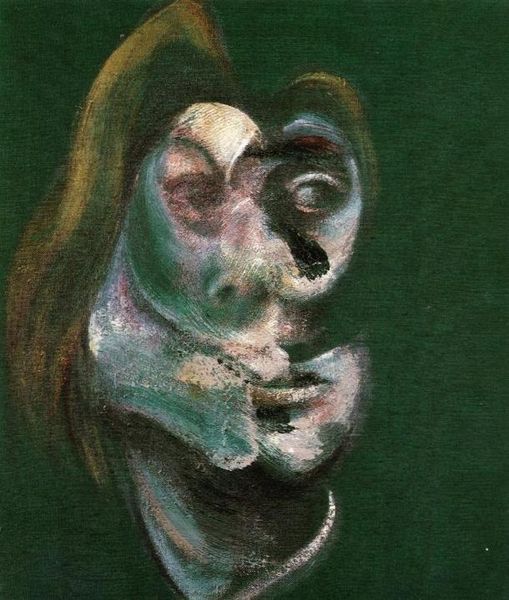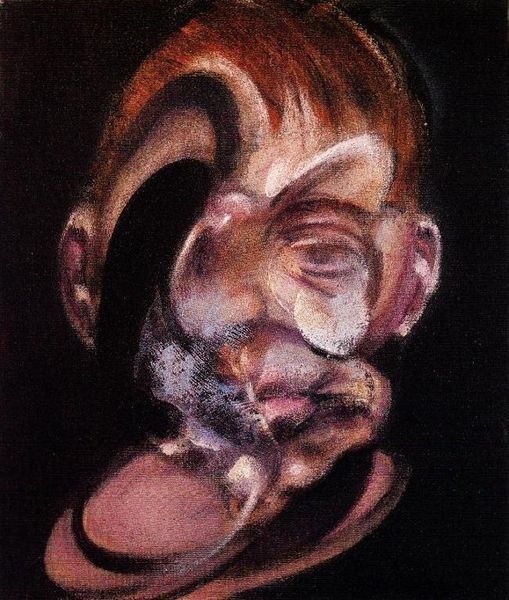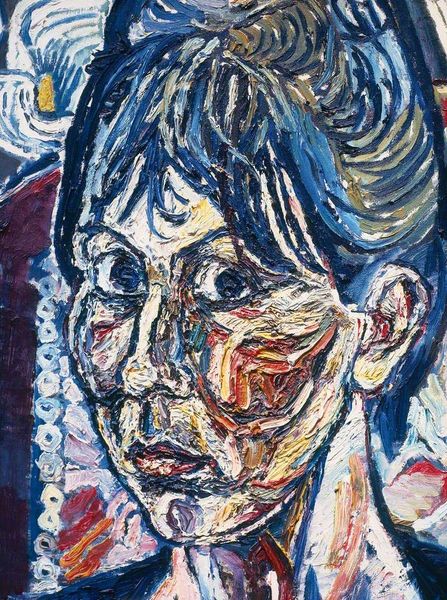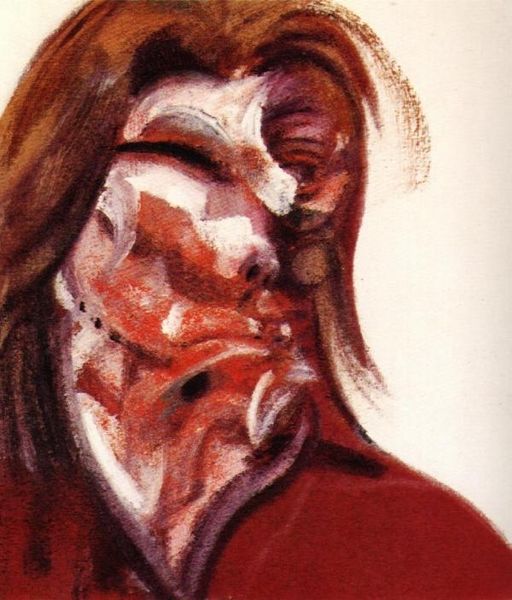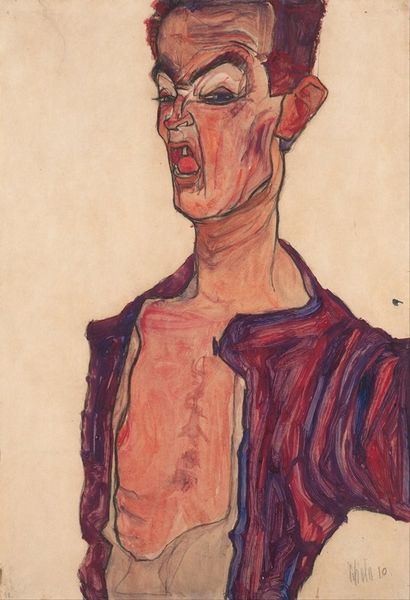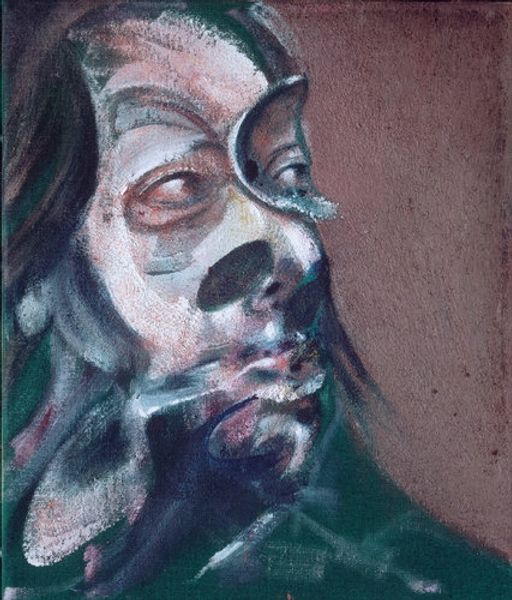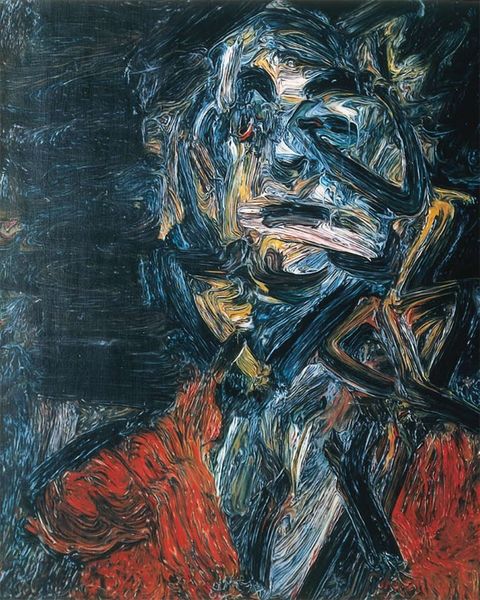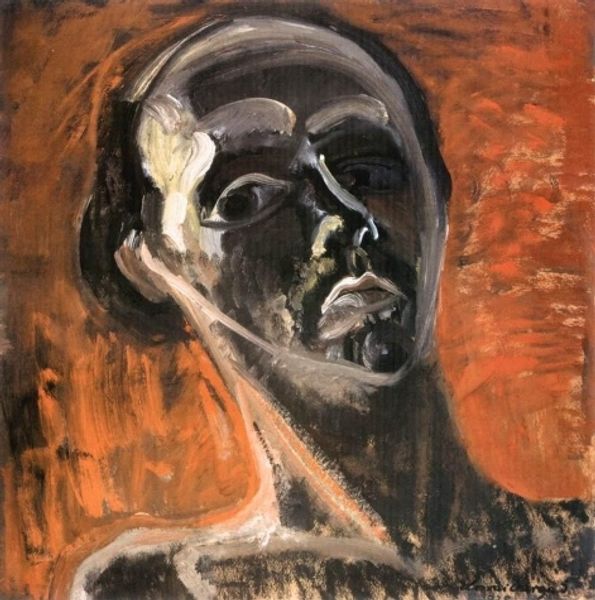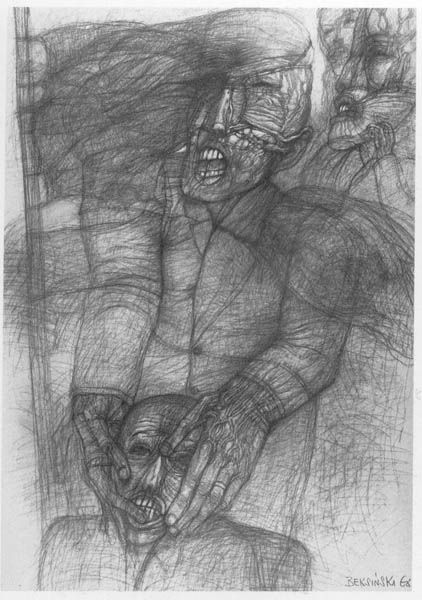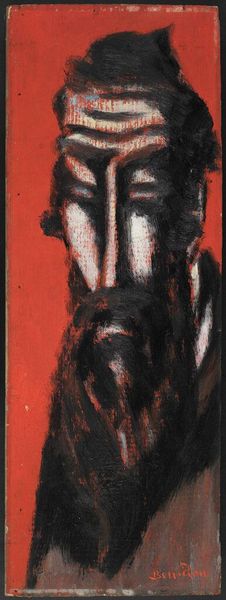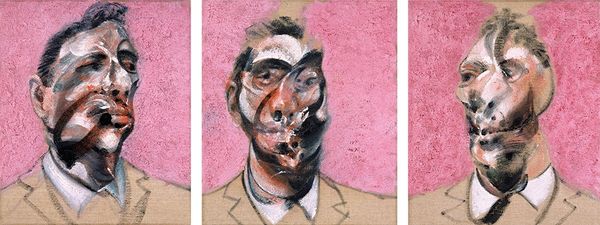
Dimensions: 35.5 x 30.5 cm
Copyright: Francis Bacon,Fair Use
Curator: Francis Bacon’s "Three Studies of Henrietta Moraes," created in 1969, presents a powerful expressionistic portrait rendered in oil paint. What strikes you about this triptych? Editor: Well, the visceral distortion is immediately unsettling. There’s a sense of fragmentation, a breakdown of the traditional portrait. Each panel pulsates with a nervous energy that challenges our expectation of what it means to represent a person. Curator: Absolutely. The manipulation of the oil paint is crucial here. Notice the aggressive brushstrokes, the way Bacon seemingly sculpts the features, almost deconstructing them. He's not just painting a likeness; he’s investigating the very material and process of representation. I wonder what considerations drove the physical application of paint onto these canvases. Editor: Indeed. It’s impossible to separate this raw style from the tumultuous socio-political climate of the late 1960s. The Civil Rights Movement, feminist discourse, anti-war protests...these upheavals deeply impacted art and representation. The distorted features and unnerving composition might be seen as reflecting a wider societal anxiety, questioning stable identities and norms. Furthermore, Henrietta Moraes was part of Bacon's queer artistic circle. What does this tell us about the artist's choice of muse? Curator: I agree. Also, thinking about his technical approach, it is clear that the means of production carry intense meaning. Bacon famously worked from photographs, manipulating and distorting the images to create a kind of psychological portrait. Consider, though, the inherent flatness of the photograph versus the textural possibilities that oil allows him to play with. Editor: And beyond his inner circle, we should contextualize Henrietta's place in wider cultural shifts. As a figure openly challenging social conventions, her own complexities likely resonated within a historical moment ripe with discussions around gender, identity and representation in art. Curator: Considering all that has been explored, examining Bacon's choices regarding his tools, paint application and process reveals his intention of more than simple representation of his subject. Editor: Looking at Bacon’s distorted style and social context together reveals the importance of portraiture’s power in art and activism, challenging tradition to create progressive messages.
Comments
No comments
Be the first to comment and join the conversation on the ultimate creative platform.
